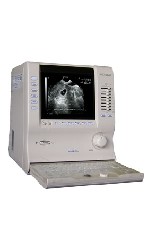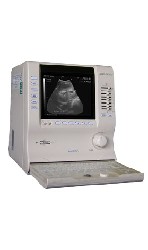Medical Ultrasound Imaging
Wednesday, 8 May 2024
'Ultrasonic' p3 Searchterm 'Ultrasonic' found in 40 articles 4 terms [ • ] - 36 definitions [• ] Result Pages : •  From ALOKA Co., Ltd.;
From ALOKA Co., Ltd.;'Innovative Image Quality in a Compact Size. Featuring design concepts inherited from our higher end systems along with Aloka's latest proprietary electronic technologies, the compact SSD-900 delivers superb images. Traditionally, portable units suffer from hardware and software limitations that affect image quality. Aloka's SSD-900 sets new standards for what's possible in a portable unit. Incorporating over 50 years of experience and unique micro-chip technologies, the SSD-900 generates incredibly high-resolution images. The SSD-900 offers a full range of measurement functions for professional ultrasonic examination. And unlike conventional portable systems, the SSD-900 includes annotation labeling and 15-channel preset functions as standard features. The system also use Super High Density transducers (found our high-end systems) to enhance imaging resolution. These multi-frequency transducers provide a broad range of imaging frequencies to optimize scan frequency for depth of view.' •  From ALOKA Co., Ltd.;
From ALOKA Co., Ltd.;'Innovative Image Quality in a Compact Size Featuring design concepts inherited from our higher end systems along with Aloka's latest proprietary electronic technologies, the compact SSD-900V delivers superb images. Traditionally, portable units suffer from hardware and software limitations that affect image quality. Aloka's SSD-900V sets new standards for what's possible in a portable unit. Incorporating over 50 years of experience and unique micro-chip technologies, the SSD-900V generates incredibly high-resolution images. The SSD-900V offers a full range of measurement functions for professional ultrasonic examination. And unlike conventional portable systems, the SSD-900V includes annotation labeling and 15-channel preset functions as standard features. The system also use Super High Density transducers (found our high-end systems) to enhance imaging resolution. These multi-frequency transducers provide a broad range of imaging frequencies to optimize scan frequency for depth of view.' •
In physics, the absorbed dose is the ultrasonic power absorbed per unit of mass of an object, and is measured in watts per kilogram (W/kg). The absorption increases with ultrasound intensity and frequency. The thermal index describes the potential for heating of the patient's tissue due to the application of energy. See also Thermal Effect, Ultrasound Safety, Ultrasound Regulations. •
(Z) The acoustic impedance is dependent on the density of the material in which sound is propagated through. When an ultrasonic wave crosses an interface between tissues with different acoustic impedance, the wave divides in 2 components, and the energy of the reflected components directly relates with the acoustic impedance. The greater the impedance the more dense the material, and the greater the difference in acoustic impedance between two adjacent tissues the more reflective will be their boundary. The acoustic impedance (the unit is 'Rayl') is the product of the sound velocity and the physical dense. The acoustic impedance is very high between air or bone and other body tissues, therefore not enough energy crosses these interfaces, and no information can be collected from organs placed behind them. See also Mirror Artifact, Reverberation Artifact, Cross Talk and Ultrasound Physics. Further Reading: Basics: •
Any abnormal reaction of a patient to an examination or procedure, like for example side effects of contrast agents or claustrophobia. Claustrophobic attacks as can happen with MRI are unknown with ultrasound examinations. Adverse reactions with ultrasonic contrast agents are very infrequent. In general, adverse reactions increase with the quantity of contrast media and also with the osmolarity of the compound. Most frequently encountered adverse reactions are: Heat sensation, dizziness, nausea, hypotension due to vasodilatation, which can progress to hypotensive shock and anaphylactic reactions. Result Pages : |
Medical-Ultrasound-Imaging.com
former US-TIP.com
Member of SoftWays' Medical Imaging Group - MR-TIP • Radiology TIP • Medical-Ultrasound-Imaging
Copyright © 2008 - 2024 SoftWays. All rights reserved.
Terms of Use | Privacy Policy | Advertise With Us
former US-TIP.com
Member of SoftWays' Medical Imaging Group - MR-TIP • Radiology TIP • Medical-Ultrasound-Imaging
Copyright © 2008 - 2024 SoftWays. All rights reserved.
Terms of Use | Privacy Policy | Advertise With Us
[last update: 2023-11-06 01:42:00]




